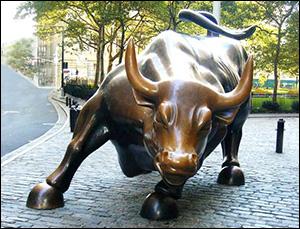Courtesy of Pam Martens.
On December 20, 2007, Bear Stearns held a conference call with analysts to review its fourth quarter earnings. During the call, the company revealed that “For the full fiscal year, the company repurchased 12 million shares of common stock at an aggregate cost of $1.7 billion.” Less than three months later, the company collapsed.
On June 13, 2008, Michael Rapoport of Dow Jones Newswires wrote that Lehman Brothers had reported “in its most recent quarterly report in April that it had repurchased about $765 million worth of its stock during its fiscal first quarter, at an average price of $59.05 a share. That includes some shares tendered by employees as payment when exercising stock options.” Three months after Rapoport wrote those words, Lehman collapsed into bankruptcy, its shares effectively worthless.
Then there was Merrill Lynch, the century old iconic retail brokerage firm and investment bank. In a July 17, 2007 press release, Merrill Lynch reported the following: “As part of its active management of equity capital, Merrill Lynch repurchased 19.8 million shares of its common stock for $1.8 billion during the second quarter of 2007, completing the $5 billion repurchase program authorized in October 2006 and utilizing $557 million of the $6 billion repurchase program authorized in April 2007.”
In the same weekend that saw the collapse of Lehman Brothers, Merrill Lynch succumbed to a buyout from Bank of America. Merrill’s share price had fallen 65 percent during the year – notwithstanding billions of dollars in share repurchases over the prior two years.
According to Katrina Brooker, writing in Fortune Magazine in October 2008, “Between 2003 and 2007, the amount of cash S&P 500 companies spent on buybacks nearly quadrupled, from $135 billion to $590 billion. The higher the market rose, the more shares companies bought. The peak of this ‘buyback bubble’ occurred in the third quarter of 2007, when the Dow was at 14,000.”
Yesterday, both the S&P 500 and the Dow Jones Industrial Average posted record high closing levels with Nasdaq closing above 5,000 – within spitting distance of its old high set 15 years ago. (Yes, it’s been a long tough slog for investors in the Nasdaq index.) And, accompanying this seemingly bullish news for stock investors is a startling assessment this morning of what’s going on behind the scenes with share buybacks from Lu Wang and Oliver Renick at Bloomberg News. Here’s the bullet points of their story:
- Stock buybacks and dividends are eating up “almost all the Standard & Poor’s 500’s earnings”;
- Even with “earnings estimates deteriorating,” corporations have announced “an average of more than $5 billion in buybacks each day.”
- “Companies in the S&P 500 have spent more than $2 trillion on their own stock since 2009”;
- Companies could be overpaying for their stock. “The S&P 500 trades at 18.9 times earnings, compared with an average of 16.9 since 1936, data compiled by Bloomberg and S&P show.”
…




